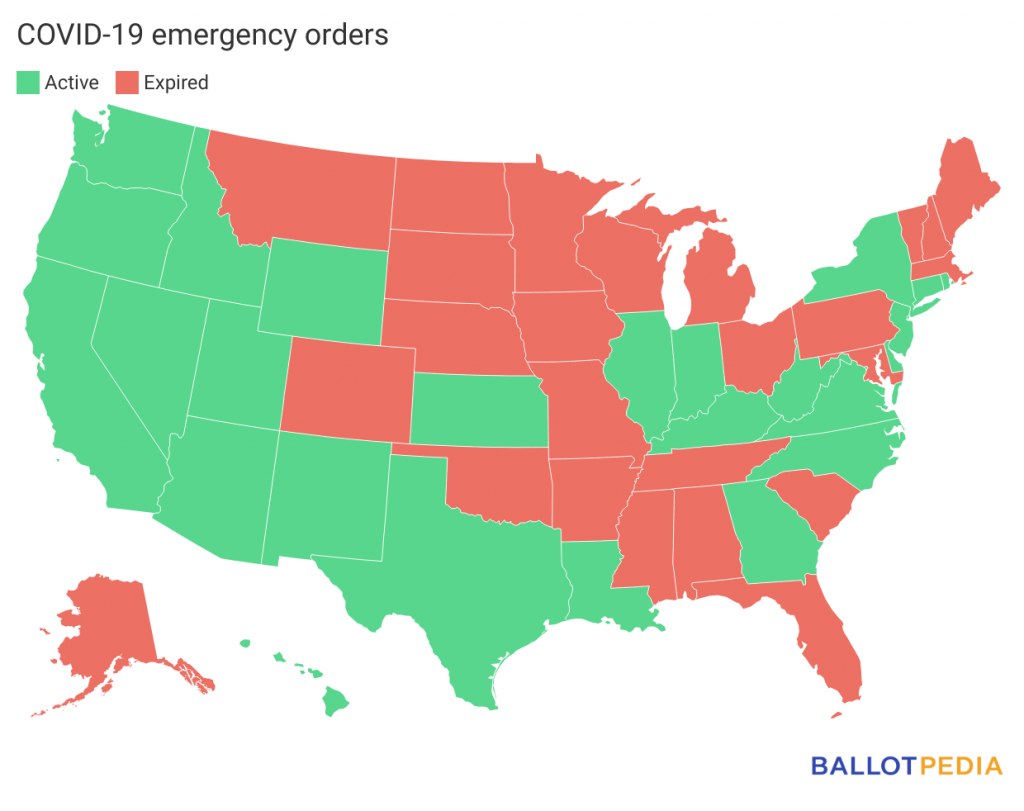At the start of the pandemic, governors and state agencies in all 50 states declared active emergencies related to the COVID-19 virus. These orders allowed officials to access resources unavailable to them during non-emergencies, like stockpiles of medical goods and equipment, and temporarily waive or suspend certain rules and regulations.
Half of all states remained under active COVID-19 emergency as of Feb. 25, 2022. In the other 25 states, the emergencies have ended.
- In the 14 states with a Democratic trifecta, 12 still have active emergencies.
- In the 23 states with a Republican trifecta, eight still have active emergencies.
- In the 13 states with divided government, five have active emergencies.
Alaska and North Dakota were the first states to end their COVID-19 emergency orders. Those orders ended on April 30, 2021. Most recently, Iowa Gov. Kim Reynolds (R) ended the statewide COVID-19 emergency on Feb. 15, 2022.
In some states, governors ended their original emergency orders and later reinstated new ones. In Maryland, for example, Gov. Larry Hogan (R) ended the statewide COVID-19 emergency on July 1, 2021, saying, “Thanks in large part to the hard work, the sacrifices, and the vigilance of the people of Maryland, we have finally reached the light at the end of that long tunnel. Each and every one of you—your actions—have made this day possible.” Hogan declared a 30-day emergency on January 4, 2022, to “keep our hospitals from overflowing, to keep our kids in school, and to keep Maryland open for business, and we will continue to take whatever actions are necessary in the very difficult days and weeks ahead.” He did not renew the emergency when it expired on Feb. 3.
In addition to Maryland, governors in Alabama, Delaware, Kansas, New Jersey, New York, and Virginia also ended their emergencies and later reinstated them.
In Michigan and Wisconsin, state supreme court judges ended statewide COVID-19 emergencies. Michigan’s emergency ended on Oct. 5, 2020, when the Michigan Supreme Court ruled Gov. Gretchen Whitmer (D) lacked the authority to issue and extend emergency and disaster declarations after the legislature declined to extend those orders earlier that spring. The Wisconsin Supreme Court ended the statewide emergency on March 31, 2021, ruling 4-3 that Gov. Tony Evers (D) overstepped his authority when he declared several states of emergency since the start of the pandemic without input from the legislature.



